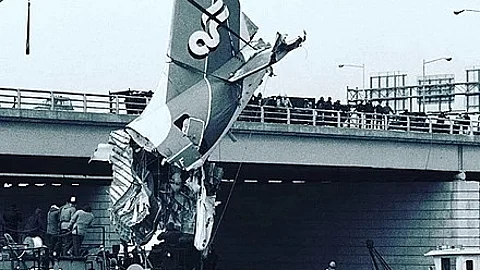

Air Florida Flight 90 took off from what is now Reagan National Airport and crashed into the Fourteenth Street Bridge before plunging into the frozen Potomac River on January 13, 1982.
Only five of the 79 people on board survived and four motorists on the bridge were also killed.
Investigations by the U.S. National Transportation Safety Board concluded that pilot error, combined with improper de-icing procedures, led to the disaster.
Those tragic findings caused significant reforms in the aviation industry.
Stricter rules around de-icing happened almost immediately.
Airlines were required to apply de-icing fluids more carefully and check wings, engines, and other critical surfaces several times before takeoff in wintry conditions.
Regulators also directed flight crews to run engine anti-ice systems at the first sign of freezing precipitation.
New programs placed greater emphasis on winter weather risks and recommended simulator sessions that focused on handling ice and snow buildup.
These changes helped pilots make safer decisions under pressure and provided them with tools to recognize dangerous conditions at a glance.
Crew resource management (CRM) became another key innovation.
CRM taught captains and first officers how to communicate clearly and challenge one another if safety rules were not being followed.
Before the crash, working together was not always standard procedure.
In addition, airlines and manufacturers began to explore new technologies that could detect and melt ice on aircraft surfaces.
Over the last four decades, these technological advances combined with better pilot training reduced the likelihood of similar incidents.
Decades later, Flight 90’s story still resonates throughout the aviation world.
Experts say its lessons remind everyone from ground crews to senior pilots that vigilance and teamwork are vital to keeping winter flights safe.
